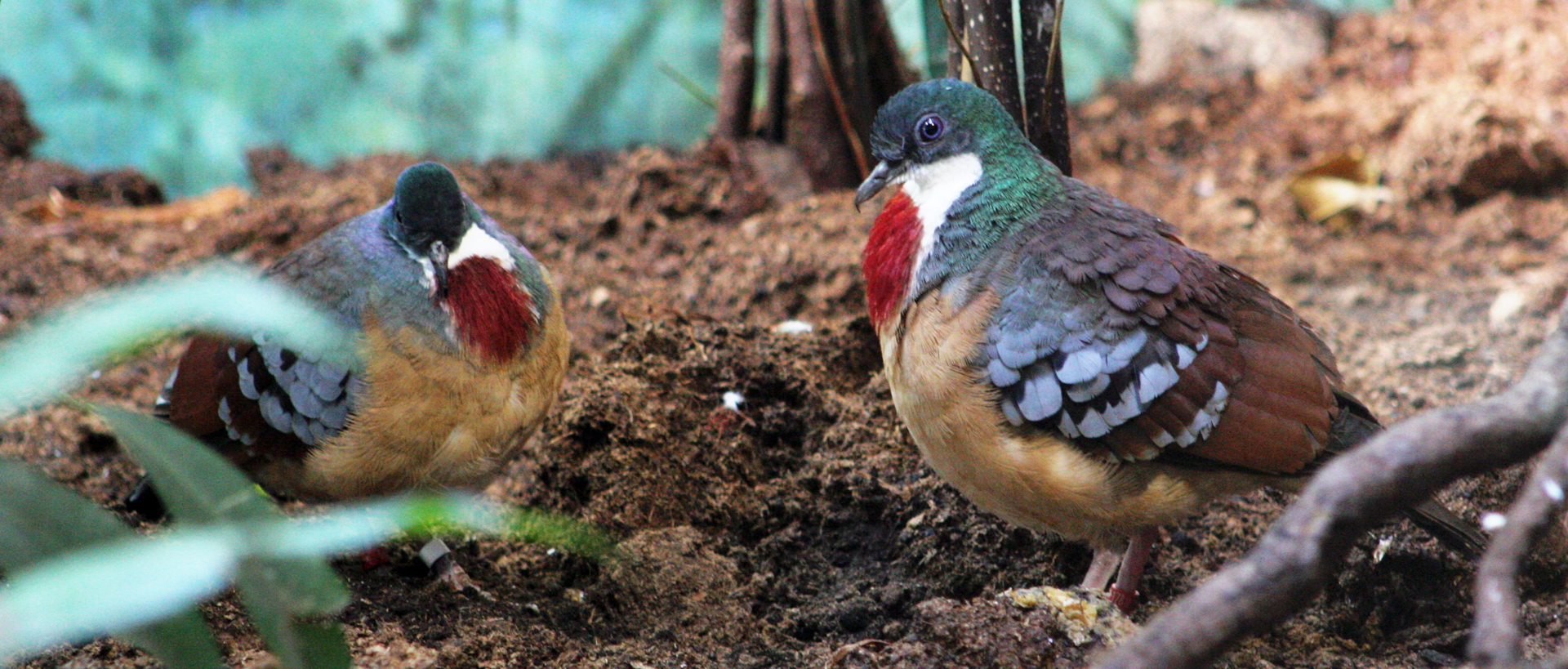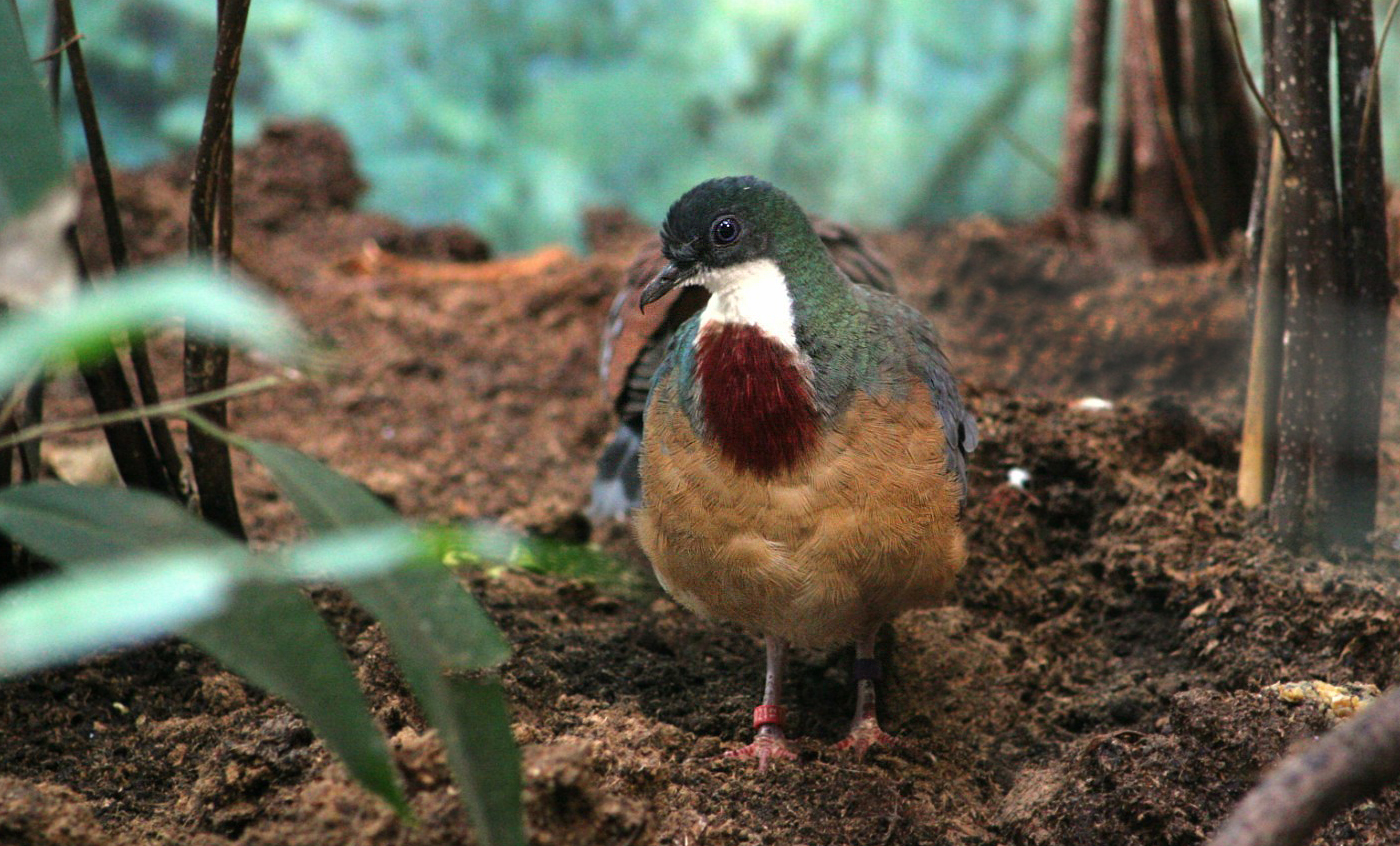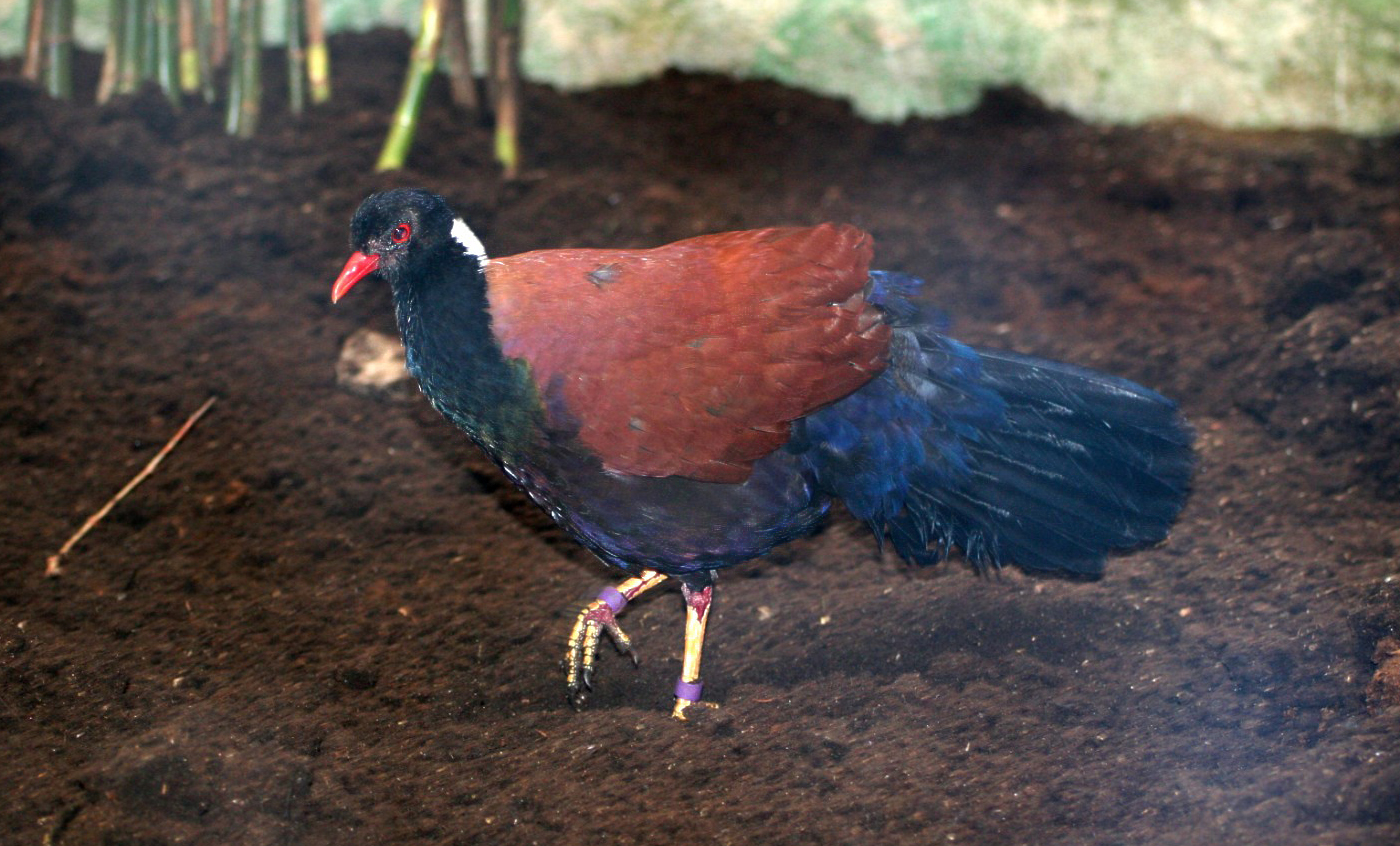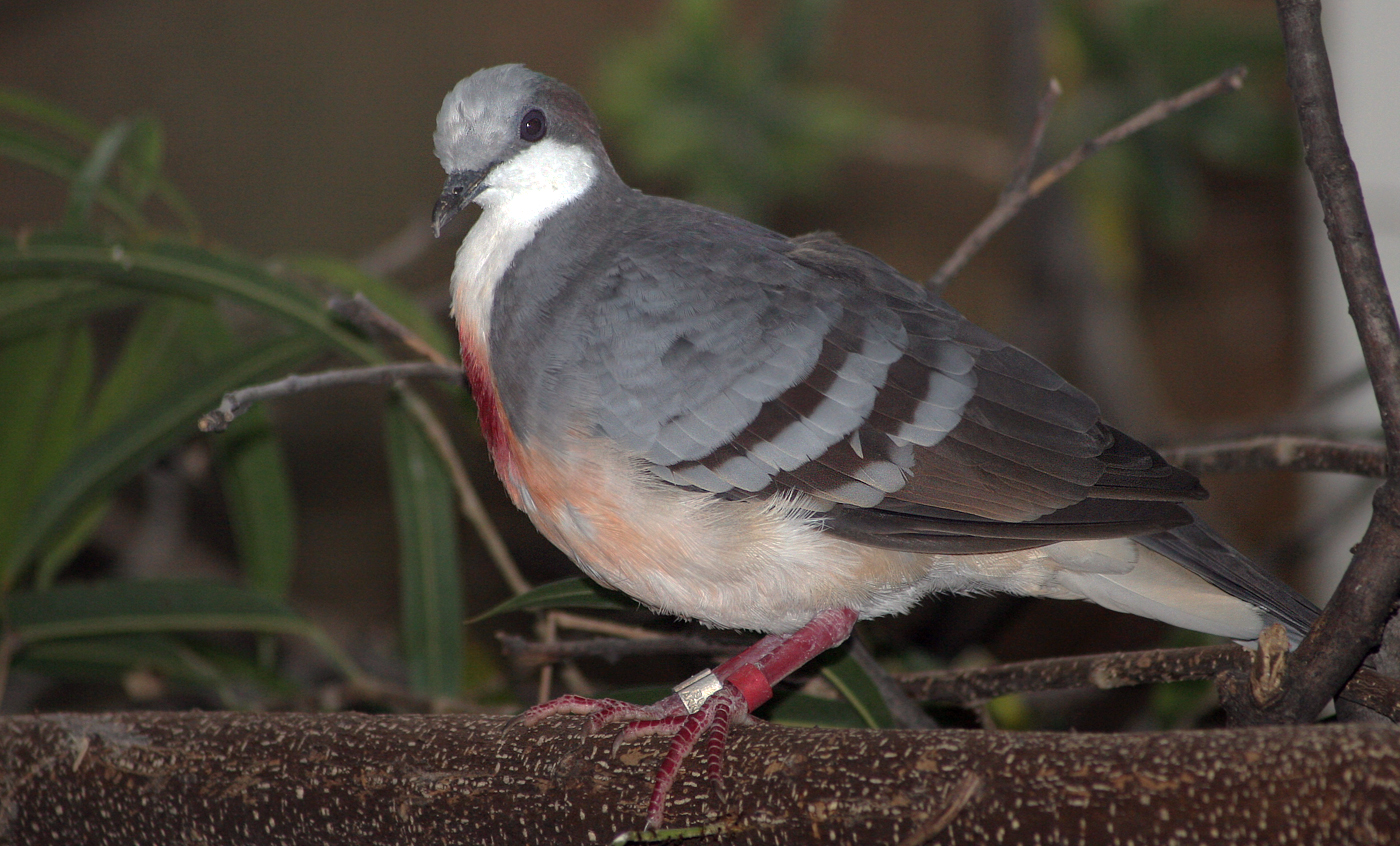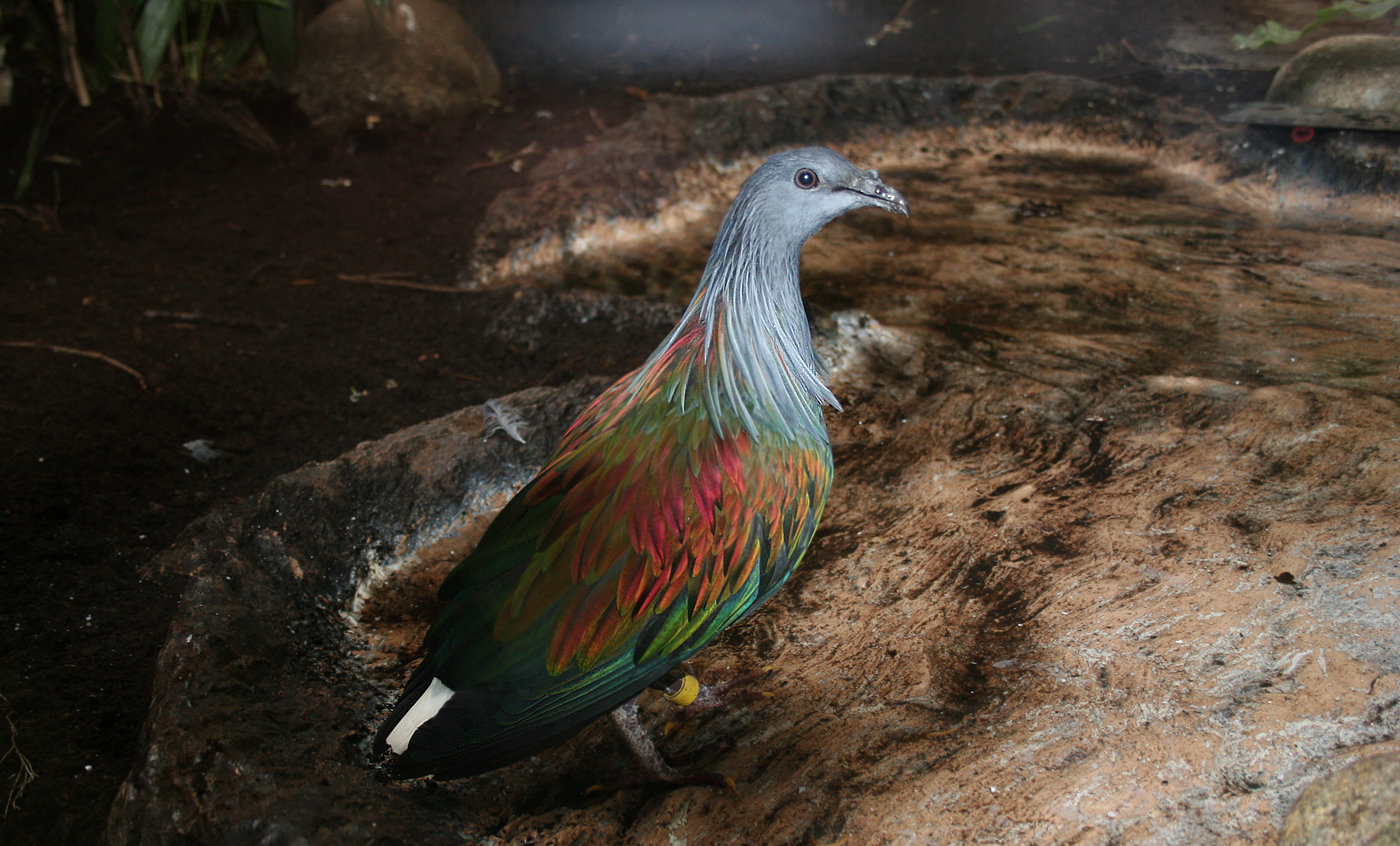Mindanao bleeding-heart dove
This dove, endemic to the Philippines, gets its name from the red feathers on its chest. It lives in forests and feeds on seeds, fallen fruit and insects that it finds on the ground. A land-based bird, when disturbed it flees by running or taking short bursts of flight to hide in the undergrowth.
Breeding program
Natural habit
Mindanao bleeding-heart dove
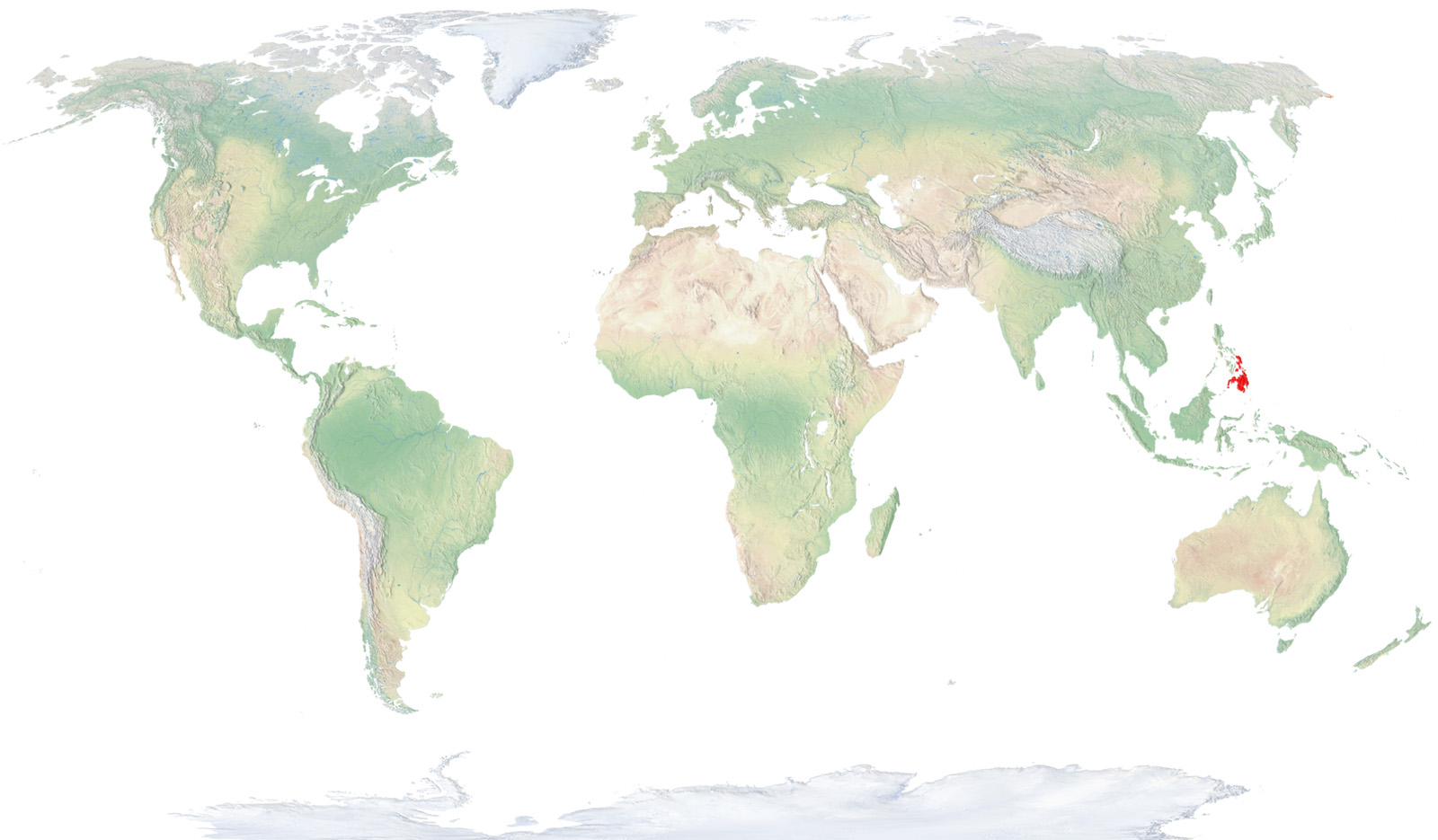
- Distribution / Resident
- Breeding
- Wintering
- Subspecies
Risk level
- Extint
- Extint in the wild
- Critically endangered
- In Danger
- Vulnerable
- Near threatened
- Minor concern
- Insufficient data
- Not evaluated
Taxonomy
Physical characteristics
Biology
Reproduction
Biology
Its common name is due to the red feathers on its chest and its generic name, Gallicolumba, which means dove-hen, is a reference to the fact that it spends most of its time pecking the ground, like hens do. The colouring on its head and dorsal are spectacular, with green and blue tones to the back, predominantly brown on the back and wings, and cream coloured on the belly.
This dove is endemic to the southern Philippines, inhabiting the islands of Basilan, Bohol, Dinagat, Leyte, Mindanao and Samar. It lives in primary and secondary forests 150 to 750 metres above sea level, and has eminently land based habits..
It spends most of its time searching the ground for seeds, fallen fruits and insects to feed on.
Of their breeding habits, we only know what has been researched and observed in zoos, where they are quite common.
They tend to start breeding between April and May, building untidy nests with bamboo branches and leaves, in which they lay a single cream-coloured egg.
This bird is shy and solitary and quite difficult to observe. If disturbed, it flees quickly or makes short hops before continuing its escape along the ground and hiding among shrubs. They normally only head to branches to sleep and make their nests.
They are vulnerable, due to the loss of habitat and hunting for the pet market, with an extremely important generalised decline in populations throughout their area of distribution.




